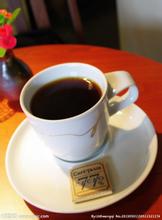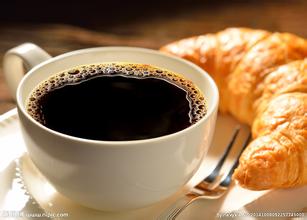Introduction to the characteristics of Rwanda Coffee Flavor and Flavor Manor
The biggest harvest season for Rwandan coffee is during the main rainy season, from March to the end of May. During the harvest season, farmers spend most of their day picking coffee fruits by hand. In the afternoon, farmers carry coffee fruits in traditional baskets made of banana leaves to a cleaning station a few hours away. The mechanic picks out the best quality crimson coffee fruit by hand and returns the remaining coffee fruit to the farmers and sells it at a low price in the market outside the Malabaga work area. The mechanic pays the farmer $0.10 per kilogram. The guild deposits the remuneration into the farmer's bank account every two weeks.
The sink technician in the process will clean the coffee immediately because the delay will ferment the sugary outer layer of the coffee beans, ruining the taste of the coffee. The coffee beans are first thrown into a deep trough, and the best quality coffee fruit goes into the bottom and passes through a machine that peels off its skin. The mechanic takes out the floating coffee fruit, processes it in the same way and allows the cooperative to sell it at a lower price in the domestic market. Coffee beans through three cooperative peeling and selection machines, remove the skin and sugary outer layer, and then let the coffee beans individually through the vibrating filter. The filter separates the highest quality A beans from those classified as Class B; the two grades are transported to the hills with a 1% slope of the waterway. In the process of transportation, coffee beans of all qualities are further classified, and there are about 15 sinks at the bottom of the channel that can capture different kinds of coffee beans. Coffee beans are preserved continuously in water. Grade A beans and grade B beans stay for two days and 15-20 hours respectively to slightly ferment and convert the remaining sugar without serious damage to the taste.
After the washed coffee beans are air-dried on the net rack, after washing the coffee beans many times to completely remove the remaining skin and sugary outer layer, the coffee beans are put into the sheltered rack to air-dry. Cooperative staff regularly flip coffee beans, while technicians continue to look for and pick out poor quality coffee beans. The two-week drying process takes place in the sun (prepare the mulch in case of rain) and keep turning the coffee beans. This step reduces the water content of coffee beans from 40% to 12%. Malaba coffee grows in southern Rwanda, about 12km (7 miles) from the city of Butare and about 150km (93 miles) from the capital, Gejali. The plan began in the Malaba area of Butare province, but was taken over by a local government organization in 2006, which is now part of the Huye district of the southern province. Due to its proximity to the East African Rift Valley and the Neuenway Forest Mountains, this zone is sloping, steep and has fertile volcanic soil. Coffee is grown at 1700 to 2100 m (5577-6889 ft) above sea level, usually with terraces on steep hillsides. The zone also has an average annual rainfall of 115 centimeters (45 inches). Most of them come from the rainy season from March to May, which is also the main coffee harvest season. The temperature at high altitude is slightly lower, with an average of about 20 °C (68 °F), which varies slightly due to seasons.

Important Notice :
前街咖啡 FrontStreet Coffee has moved to new addredd:
FrontStreet Coffee Address: 315,Donghua East Road,GuangZhou
Tel:020 38364473
- Prev

Light aroma of Colombian coffee taste the characteristics of the manor producing area introduce Colombian boutique coffee
Colombia, located in the northwest of South America, is a beautiful country with a long history. Indians have lived on this land since ancient times. It was colonized by Spain in 1531 and gained independence in 1819. It was renamed in 1886 to commemorate Columbus, the discoverer of the American continent. Colombia has beautiful mountains and rivers, beautiful scenery, pleasant climate and four seasons.
- Next

Fresh Hawaiian Kona Coffee Flavor Taste the characteristics of the manor area introduce Hawaiian boutique coffee
The quality of the fine Kona coffee is suitable for the right geographical location and climate. Coffee trees grow on the slopes of volcanoes, and their geographical location ensures the altitude needed for coffee to grow; the dark volcanic ash soil provides the necessary minerals for coffee. This is probably due to the fact that Kona Island is rich in volcanic black mud with moderate acidity, rich mineral content and suitable water content. Parallel
Related
- Detailed explanation of Jadeite planting Land in Panamanian Jadeite Manor introduction to the grading system of Jadeite competitive bidding, Red bid, Green bid and Rose Summer
- Story of Coffee planting in Brenka region of Costa Rica Stonehenge Manor anaerobic heavy honey treatment of flavor mouth
- What's on the barrel of Blue Mountain Coffee beans?
- Can American coffee also pull flowers? How to use hot American style to pull out a good-looking pattern?
- Can you make a cold extract with coffee beans? What is the right proportion for cold-extracted coffee formula?
- Indonesian PWN Gold Mandrine Coffee Origin Features Flavor How to Chong? Mandolin coffee is American.
- A brief introduction to the flavor characteristics of Brazilian yellow bourbon coffee beans
- What is the effect of different water quality on the flavor of cold-extracted coffee? What kind of water is best for brewing coffee?
- Why do you think of Rose Summer whenever you mention Panamanian coffee?
- Introduction to the characteristics of authentic blue mountain coffee bean producing areas? What is the CIB Coffee Authority in Jamaica?

